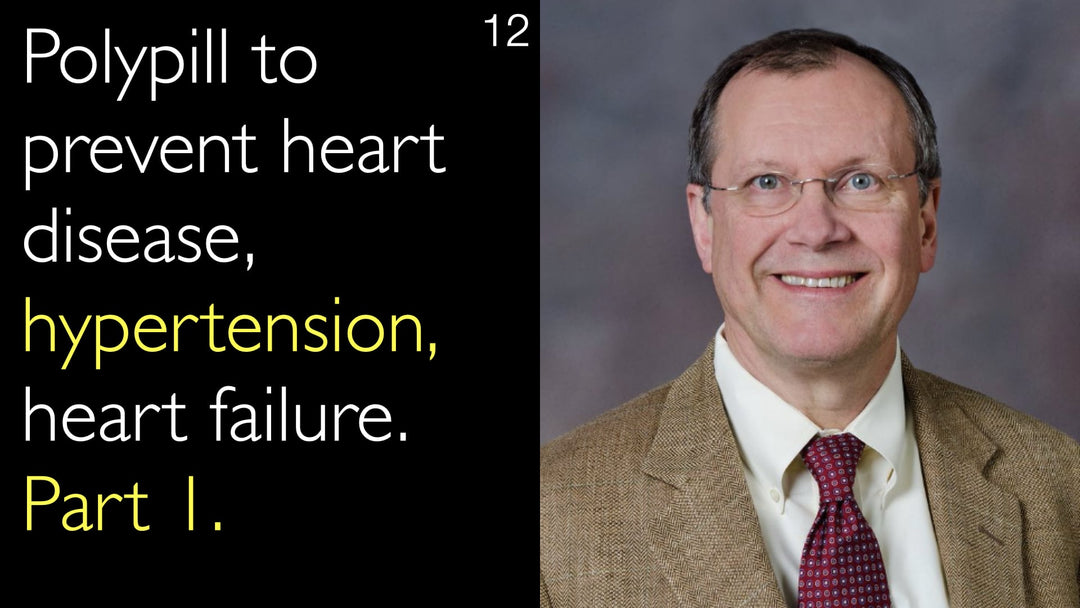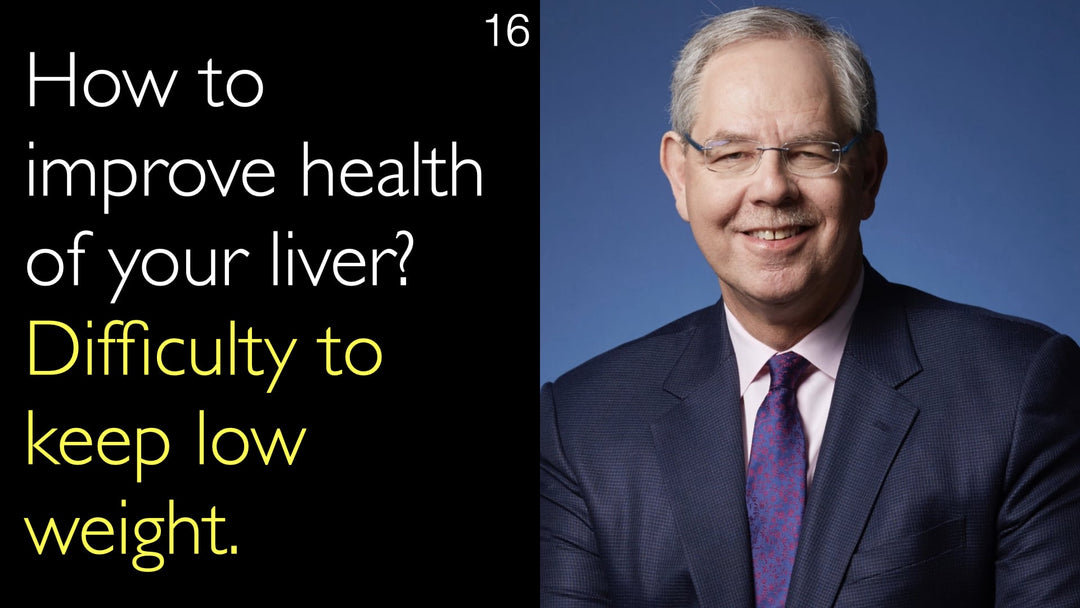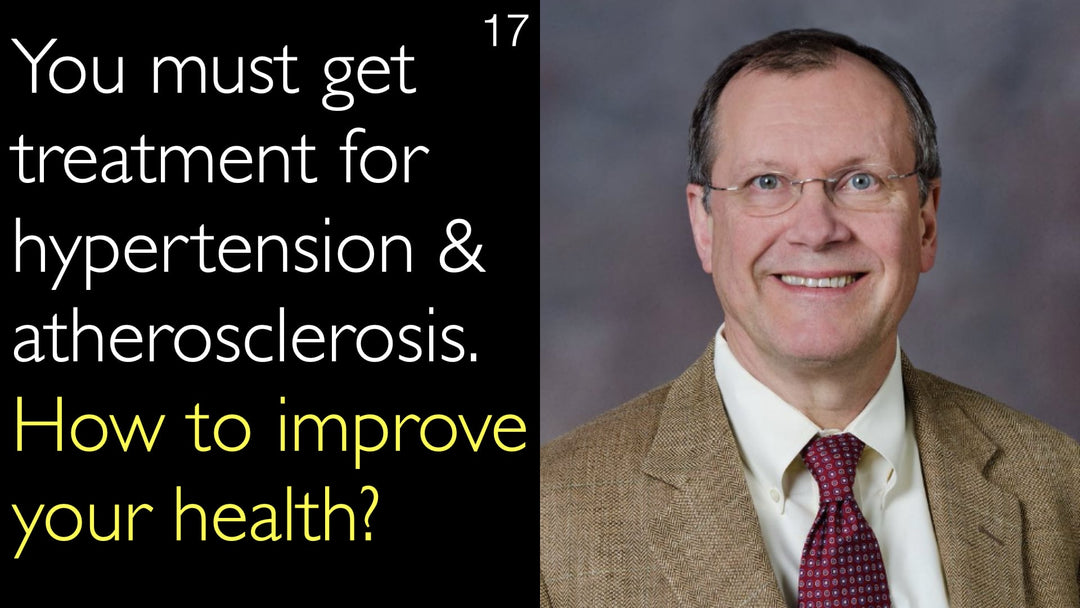O renomado nefrologista e especialista em hipertensão, Dr. David Ellison, MD, explica a abordagem da polipílula na prevenção de doenças cardiovasculares. Ele detalha como uma combinação de medicamentos em baixa dosagem pode reduzir drasticamente eventos cardiovasculares com efeitos colaterais mínimos. Dr. Ellison também aborda um novo conceito de "polipílula diurética" para evitar hospitalizações por insuficiência cardíaca, ao bloquear simultaneamente múltiplos sítios de transporte renal.
Estratégia da Polipílula para Prevenção de Doença Cardiovascular e Insuficiência Cardíaca
Navegar para a Seção
- Conceito e Composição da Polipílula
- Mecanismo e Benefícios da Terapia em Baixa Dose
- Desafio da Hospitalização por Insuficiência Cardíaca
- Inovação da Polipílula Diurética
- Papel dos Inibidores de SGLT2 na Insuficiência Cardíaca
- Estratégias Futuras de Prevenção
- Transcrição Completa
Conceito e Composição da Polipílula
O Dr. David Ellison, MD, demonstra grande entusiasmo pela abordagem da polipílula na prevenção de doenças cardiovasculares. A polipílula geralmente combina medicamentos em doses baixas, incluindo uma estatina para controle do colesterol, eventualmente aspirina por seus efeitos antiplaquetários, um inibidor da ECA ou BRA para controle da pressão arterial e um diurético tiazídico, como hidroclorotiazida ou indapamida. Essa estratégia de múltiplos fármacos demonstrou eficácia notável, reduzindo eventos cardiovasculares em cerca de 50% em estudos clínicos, especialmente em países como Irã e Paquistão, onde foi amplamente adotada.
Mecanismo e Benefícios da Terapia em Baixa Dose
O princípio fundamental por trás do sucesso da polipílula está no uso de múltiplos medicamentos em doses muito baixas. O Dr. David Ellison, MD, explica que, embora cada classe de fármaco ofereça benefícios em doses completas, também pode desencadear respostas fisiológicas contrárias e adversas. Por exemplo, os diuréticos estimulam o sistema renina-angiotensina-aldosterona, enquanto os inibidores da ECA podem, por vezes, causar retenção de líquidos. Ao bloquear várias vias simultaneamente com doses reduzidas, a polipílula alcança todos os efeitos benéficos, minimizando os efeitos colaterais e os mecanismos compensatórios que frequentemente prejudicam as terapias com monodroga.
Desafio da Hospitalização por Insuficiência Cardíaca
O Dr. David Ellison, MD, destaca o problema significativo da insuficiência cardíaca descompensada aguda nos Estados Unidos. A insuficiência cardíaca é uma das causas mais comuns de hospitalização, custando bilhões de dólares anualmente e causando considerável sofrimento aos pacientes. O tratamento atual geralmente envolve altas doses de diuréticos de alça para controlar a sobrecarga de líquidos durante episódios agudos. No entanto, pesquisas do Dr. Ellison revelaram que esses diuréticos em alta dose desencadeiam hipertrofia compensatória em outras partes do néfron, reduzindo sua eficácia e contribuindo para hospitalizações recorrentes.
Inovação da Polipílula Diurética
O Dr. David Ellison, MD, e sua equipe investigam uma abordagem inovadora de "polipílula diurética" para prevenir a descompensação da insuficiência cardíaca. Em vez de aguardar a necessidade de hospitalização para administrar altas doses de diuréticos de alça, essa estratégia preventiva utiliza doses muito baixas de medicamentos que bloqueiam o transporte em múltiplos segmentos renais simultaneamente: túbulo proximal, alça de Henle, túbulo contorcido distal e ducto coletor. Essa abordagem multi-alvo visa prevenir as alterações renais compensatórias que levam à resistência ao tratamento e a internações recorrentes por insuficiência cardíaca aguda.
Papel dos Inibidores de SGLT2 na Insuficiência Cardíaca
O Dr. David Ellison, MD, discute os benefícios notáveis dos inibidores do cotransportador de sódio-glicose tipo 2 (SGLT2), que atuam como diuréticos ao aumentar a excreção de sódio, além de auxiliarem no controle do diabetes. Esses medicamentos demonstraram efeitos quase milagrosos no tratamento da insuficiência cardíaca com fração de ejeção reduzida, doença renal crônica e redução de riscos de múltiplas doenças. Significativamente, os inibidores de SGLT2 representam a primeira classe de fármacos a demonstrar eficácia no tratamento da insuficiência cardíaca com fração de ejeção preservada. A pesquisa do Dr. Ellison explora o uso de inibidores de SGLT2 no túbulo proximal como parte da estratégia da polipílula diurética para prevenir a descompensação e manter a saúde do paciente por mais tempo.
Estratégias Futuras de Prevenção
O Dr. David Ellison, MD, enfatiza que a abordagem ideal para o tratamento da insuficiência cardíaca envolve prevenção, e não intervenção em crise. Embora o modelo tradicional se concentre no tratamento de descompensações agudas com altas doses de diuréticos, o futuro está em estratégias preventivas que mantêm a estabilidade. O conceito de polipílula, seja para prevenção de doenças cardiovasculares ou tratamento de insuficiência cardíaca, representa uma mudança de paradigma em direção a terapias de baixa dose e multi-alvo que trabalham em sintonia com a fisiologia do corpo, evitando mecanismos compensatórios que se tornam contraproducentes. A pesquisa do Dr. Ellison continua a explorar essas abordagens inovadoras para manter os pacientes mais saudáveis por períodos prolongados.
Transcrição Completa
Dr. Anton Titov, MD: Diuréticos, hidroclorotiazida e indapamida fazem parte da polipílula. A polipílula é especialmente adotada em países fora do Ocidente, como Irã e Paquistão. A polipílula aparentemente resultou em uma redução de 50% nos eventos cardiovasculares. O que você acha da abordagem da polipílula para reduzir os riscos de doença cardiovascular na população?
Dr. David Ellison, MD: Eu realmente adoro a ideia. Já mencionei isso antes e quero retomar o tema dos diuréticos especificamente em relação à polipílula. A ideia, como conversamos, é que, ao administrar pequenas doses de diversos medicamentos que individualmente trazem benefícios, talvez se consiga uma taxa menor de efeitos colaterais ou mesmo nenhum, com benefícios dramáticos.
Dr. David Ellison, MD: Normalmente, a polipílula inclui uma estatina, eventualmente aspirina, um inibidor da ECA ou bloqueador do receptor de angiotensina, e um diurético tiazídico. Sabemos que todos esses medicamentos melhoram os desfechos dos pacientes quando usados em doses completas. Mas um dos problemas de usar qualquer uma dessas classes é que ela elicia uma resposta fisiológica contrária que pode ser adversa.
Por exemplo, ao dar um diurético, estimula-se o sistema renina-angiotensina-aldosterona. Como conversamos, angiotensina e aldosterona podem ser agentes prejudiciais. Ao estimular esse sistema, pode haver efeitos adversos. Acreditamos que os benefícios superam os riscos ao administrar um diurético tiazídico.
Por outro lado, ao inibir o sistema renina-angiotensina e reduzir a pressão arterial, pode-se, por vezes, tender a acumular líquido, o que é ruim. Então, em teoria, ao bloquear múltiplos pontos ao longo da via, consegue-se todos os efeitos bons sem os ruins. Com doses muito baixas, provavelmente evita-se a maioria dos efeitos colaterais.
Eu sou muito entusiasta da polipílula. Acho os dados muito excitantes. Se deveria ser amplamente adotada em países como os Estados Unidos ou Europa, no momento, não há entusiasmo suficiente para isso. Mas acredito que isso se deve mais à inércia do que a bases científicas.
Se pudesse aconselhar conhecidos, se estivesse disponível aqui, eu sugeriria que experimentassem. Voltando aos diuréticos por um momento, acredito que o mesmo fenômeno se aplica.
Mencionei que a insuficiência cardíaca descompensada aguda, ou pacientes com múltiplas hospitalizações por insuficiência cardíaca, é um grande problema para o país. É uma das causas mais comuns de hospitalização nos Estados Unidos; custa bilhões de dólares, e os pacientes ficam realmente miseráveis durante esses episódios de descompensação.
O que podemos fazer para tornar isso menos provável? Atualmente, quando os pacientes chegam, administramos doses muito altas de diuréticos de alça porque é necessário. É a única maneira de promover diurese em pacientes com insuficiência cardíaca.
Mas agora entendemos, em parte graças a trabalhos em nosso laboratório, o que a administração de um diurético faz ao rim para causar compensação. Ao dar uma alta dose de um diurético de alça cronicamente, outras partes do rim compensam tornando-se hipertróficas.
Dr. David Ellison, MD: Ocorre hipertrofia de outras partes do néfron quando se bloqueia o transporte em um segmento. Acreditamos que uma das razões para episódios recorrentes e perda de eficácia dos diuréticos de alça é que os segmentos hipertróficos do néfron não bloqueados superam as ações desses diuréticos.
Portanto, provavelmente a hora certa de intervir não é quando os pacientes chegam ao hospital com descompensação aguda, mas antes dela. Acredito, e estamos estudando isso no laboratório, com esperança de traduzir para a clínica.
Em vez de dar uma dose muito alta de um diurético de alça, administra-se uma dose muito pequena de um medicamento que bloqueia o transporte no túbulo proximal, na alça de Henle, no túbulo contorcido distal e no ducto coletor. Assim, teríamos uma abordagem diurética eficaz que não levaria aos mecanismos compensatórios que se tornam inimigos em vez de aliados.
Estamos testando essencialmente uma polipílula diurética para ver se podemos prevenir as alterações compensatórias no rim que acabam levando pacientes com insuficiência cardíaca aguda ao hospital. Ainda não sabemos a resposta, mas estamos avançando nessa investigação.
Realmente acredito que esse tipo de abordagem, uma polipílula diurética, faz muito sentido. Acrescentaria que agora sabemos que os inibidores de SGLT2, que são diuréticos—aumentam a excreção de sódio, além de auxiliarem no tratamento do diabetes—são quase milagrosos. Podem tratar insuficiência cardíaca com fração de ejeção reduzida, doença renal crônica e reduzir riscos de muitas doenças.
Esta é a primeira classe de medicamentos que demonstrou capacidade de tratar insuficiência cardíaca com fração de ejeção preservada.
Dr. David Ellison, MD: São realmente medicamentos excepcionais.
Dr. David Ellison, MD: Então, em vez de usar um diurético típico no túbulo proximal, também investigamos o uso de um inibidor de SGLT2 no túbulo proximal com o mesmo objetivo, em doses muito pequenas, tentando prevenir a descompensação para manter as pessoas mais saudáveis por mais tempo.







